A Junk-Rich Middle School Science Curriculum
“What program do you use for your science curriculum?”
This was a question that came my way while I was sitting with a group of high performing science educators from across the state of Ohio. Initially, I was embarrassed for two reasons:
(1) As assistant principal, I could not name the “program” that we use (we don’t have one – thankfully, we use high quality teacher created materials);
(2) My “program” when I taught science for a better part of 10 years was junk. I do not mean junk in that it was not very good, I mean junk as discarded material.
As the conversation shifted, the discussion turned to how implementing today’s science standards correctly is expensive and difficult. Again, I sat there and listened curiously, but still felt uncomfortable so I just stayed quiet and took it all in.
I also reflected back on my former science budget, and it was minimal. Even with a minimal budget, I still provided my students with authentic learning experiences that were correlated to the standards and provided opportunities for student reflection.
I didn’t get these experiences from the shiny catalogues that would show up in my mailbox daily or from a plug-and-teach program that is “specialized to meet the needs of all students in your classroom.” In my classroom, I created these experiences for students from JUNK.
Why JUNK?
“What are we going to do with all of this junk?”
This is a question we hear all of the time. When I hear this, the science teacher in me becomes intrigued to see what new learning experience can be created from this discarded material.
Jars, plastic bags, plastic bottles, broken electronics, broken kids toys, you name it, I wanted it. My back storage room looked like it belonged on an episode of Hoarders (much to the dismay of my principal, who supported the science aspect of it but constantly had to nudge me to make sure that I was keeping it organized).
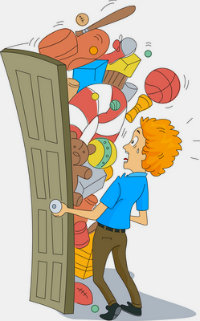
Please do not get me wrong: there are some great science kits out there, but ultimately I believe that what is best for the individual kid cannot be purchased to be used by all.
Advantages of using junk in the science classroom
A two-liter bottle can teach kids more about science than any textbook can. Kids can discover density, air pressure, buoyancy, all of Newton’s laws, etc. with a giant soda bottle.
They also can take it a step further and support a STEM or STEAM curriculum by designing and making a bottle rocket, car, or anything else that they see with their minds, all the while demonstrating their understanding of the science concepts that need to be “covered” in the science standards.
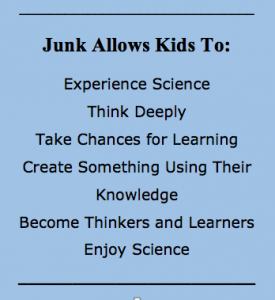
If you were utilizing a kit, you would be stuck. Instead, when you use junk, you can be flexible. Whether it is you saying, “Hey kids, let’s just put this in the recycling bin” or “I challenge each of you (or “your group”) to come with a better way of doing this,” you have the flexibility to do what is best for the kids in your classroom.
Junk supports a reflective growth mindset
We are all aware that growth mindset is a huge focus in education today. Utilizing junk in the science classroom will truly build a growth mindset for kids. When I say truly, I really mean naturally. Some things cannot be forced, and I believe that mindset is one of them.
This is why I continue to feel strongly that junk will naturally help students by allowing them to experience science and to encourage their mindset to be growth oriented. They will placed in a situation that will support a growth mindset because NOTHING WILL GO AS PLANNED!
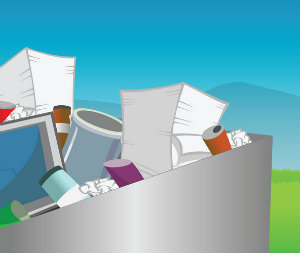
One group might receive a bag with a hole in it. Another group might bring in a 3-liter bottle instead of a 2-liter bottle. Guess what? It is okay. These differences are authentic and allow for students to have to stop, reflect, and make critical decisions about what to do next.
If you have students create a bottle rocket, and one group ends up with a 3-liter rather than a 2-liter bottle, are there things we can learn? Will the accelerations be different? Will velocities be different? Sure they will, and this is where the power of junk comes in.
After the discovery, we allow for students to reflect – individually, in pairs, and in whole group. We let them explain when their project fails, and what they can do better next time to fix it. I guarantee the “data” that you collect from these conversations will provide stronger evidence of student learning than any worksheet or quiz could.
The ultimate power of JUNK is that it is unpredictable. Harness this power in your class for deep thinking and learning about science.
Where to start
The recycling bin is probably the best place to start. All kidding aside, it is best to begin small. Look at your curriculum and determine areas where you need to implement experiences for students to experience and discover science.
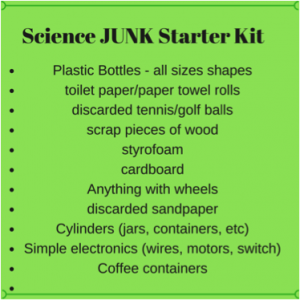
Earlier I referenced those shiny catalogs that sell all the cool science stuff. Look through those and see what ties to your curriculum, and then figure out what can be replaced with junk.
You will be shocked what you can come up with, and when you can’t figure something out, leave it up to the kids. Let them think and have a voice in your class. I was never a huge homework assigner, but one of my favorite assignments would be:
Due Monday: Bring in 3 pieces of junk that you can use to demonstrate Newton’s 3rd Law.
To me, this is the perfect homework assignment. Kids are actually thinking about science on a deep level, and it is something that cannot be copied. I always made sure that kids knew when/how to see me if they couldn’t complete the assignment for one reason or another (remember my back storage room).
One suggestion that I must give you. Never, ever grade kids based off of creativity or how their junk “looks.” I have witnessed teachers doing this, and it has a negative impact on student learning. I am all about creativity. If kids want to personalize something, great. If they don’t, that is also fine. The ultimate goal is for them to be able to become creators within the science classroom.
Ultimately it is about Science
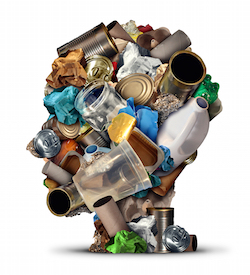
I don’t care if you have a multi-million dollar lab with all the fun tools, or a cart with boxes of junk on it. Both of them, when used correctly, will allow students to be thinkers and creators with the right mentorship.
This is why it’s critical that we have passionate educators who are always looking for ways to provide authentic learning opportunities for all students, no matter the fiscal constraints.
Yes, our schools need adequate funding for equipment and supplies. And yes, sometimes we can do more with less. It doesn’t matter if your lesson uses somebody else’s discarded material. The only thing that matters to the student and teacher is that there’s rich, meaningful learning going on.
Mike Janatovich is an Assistant Principal for Harmon Middle School in Aurora, Ohio. Prior to becoming a middle level administrator, Mike spent 10 years serving middle level students as a 7th and 8th grade science and social studies teacher. As a middle level advocate, Mike believes that educating the whole child is critical in ensuring academic success. Mike was a member of the ASCD 2015 Class of Emerging Leaders. You can follow him @mjanatovich.

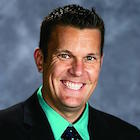
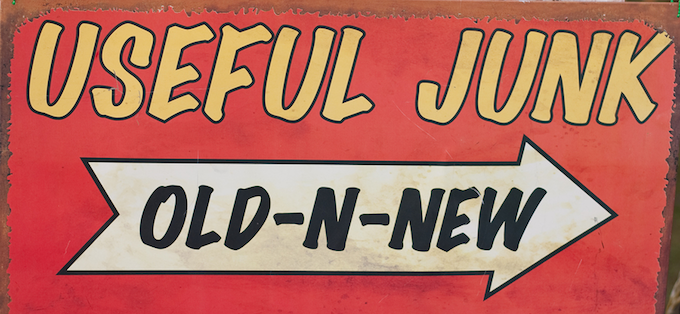

































to formulate a lab around scavenged materials requires, rarer than practical competence, a high degree of engagement with the material, in direct contrast to using prefabricated lab materials (or educational standards?,…) which almost require a degree of _disengagement_
students aren’t wanted to produce the best essays money can buy, presumably because there is some kind of long term benefit. i think maybe that applies to the educator’s situation as well.
My coworkers marvel at the assorted odds and ends I have squirreled away in my Science classroom’s drawers and cupboards. Marbles. PVC pipe. Water bottles. Paper bags. Balloons. Foam board scraps. Pie pans. Yarn. Buttons. Dice. Chalk. A thousand other little things.
My room is stuffed with junk. I need to write down all the ah-ha ideas I’ve had to use it. I start with the concept and think of how it affects the physical world and then if any of my junk could demonstrate it. Then the kids can find other objects that will do the same thing. Do you have a list? the catalogs sometimes show what another teacher has done the same thing and then marketed it.
This is a great idea. I have asked families to save items for upcoming activities with great success. It is so much better than asking for money.